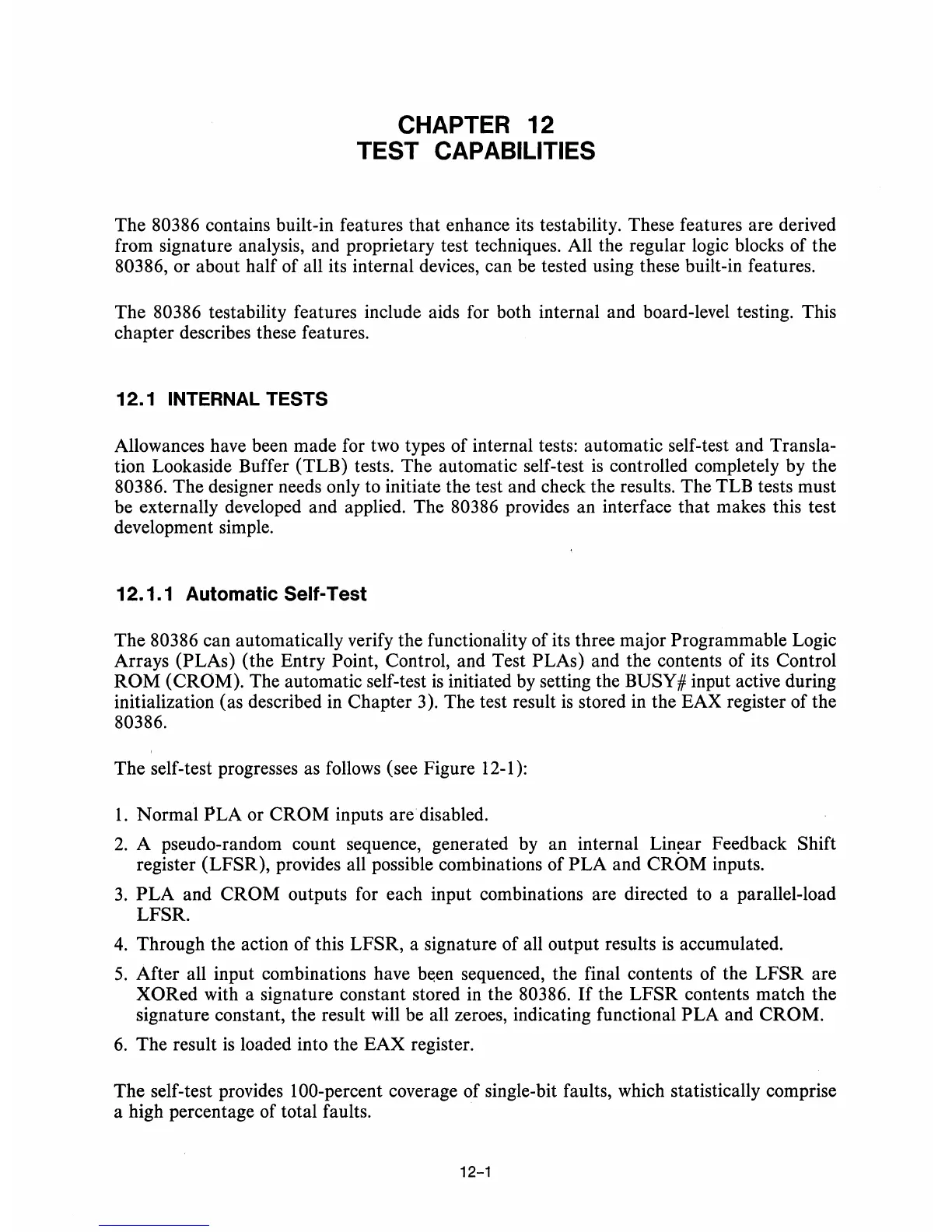CHAPTER 12
TEST CAPABILITIES
The 80386 contains built-in features that enhance its testability. These features are derived
from signature analysis, and proprietary test techniques. All the regular logic blocks of the
80386, or about half of all its internal devices, can be tested using these built-in features.
The 80386 testability features include aids for both internal and board-level testing. This
chapter describes these features.
12.1 INTERNAL TESTS
Allowances have been made for two types of internal tests: automatic self-test and Transla-
tion Lookaside Buffer (TLB) tests. The automatic self-test
is
controlled completely by the
80386. The designer needs only to initiate the test and check the results. The TLB tests must
be externally developed and applied. The 80386 provides an interface that makes this test
development simple.
12.1.1 Automatic Self-Test
The 80386 can automatically verify the functionality of its three major Programmable Logic
Arrays (PLAs) (the Entry Point, Control, and Test PLAs) and the contents of its Control
ROM
(CROM). The automatic self-test
is
initiated
by
setting the BUSY # input active during
initialization (as described
in
Chapter 3). The test result
is
stored
in
the EAX register of the
80386.
The self-test progresses as follows (see Figure 12-1):
1.
Normal PLA or
CROM
inputs are disabled.
2.
A pseudo-random count sequence, generated by an internal
Lin~ar
Feedback Shift
register (LFSR), provides all possible combinations of PLA and
CROM
inputs.
3.
PLA
and
CROM
outputs for each input combinations are directed to a parallel-load
LFSR.
4.
Through the action of this LFSR, a signature of all output results
is
accumulated.
5.
After all input combinations have been sequenced, the final contents of the
LFSR
are
XORed with a signature constant stored
in
the 80386.
If
the LFSR contents match the
signature constant, the result will be all zeroes, indicating functional PLA and CROM.
6.
The result
is
loaded into the EAX register.
The self-test provides 100-percent coverage of single-bit faults, which statistically comprise
a high percentage of total faults.
12-1

